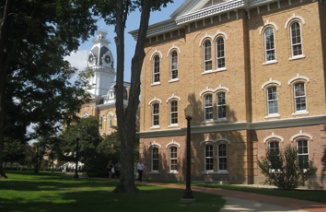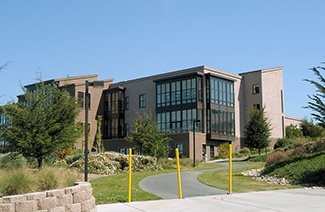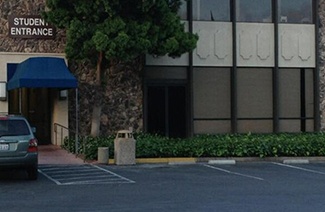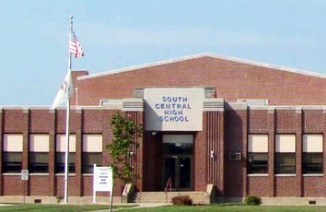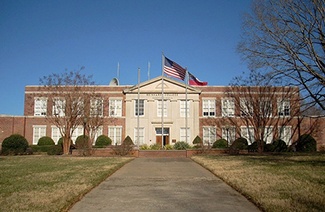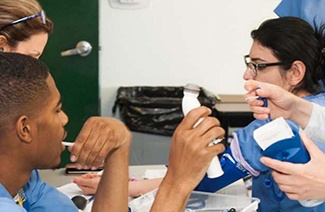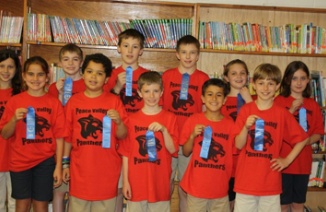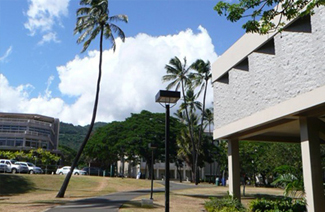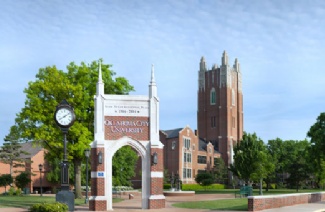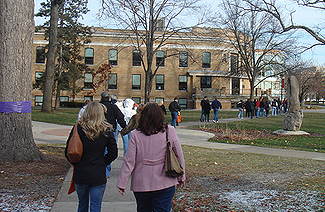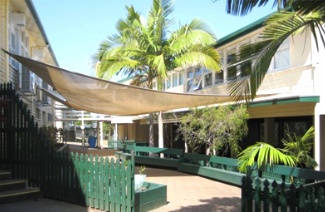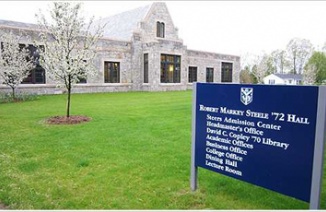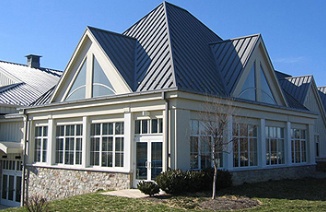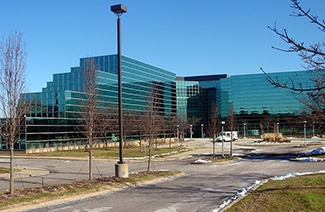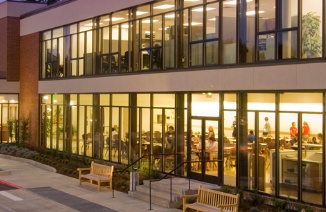本文2017年5月13日雅思阅读预测【小范围】内容,备考此次雅思考试的小伙伴不妨对以下雅思阅读预测题目进行练习,在考前进行最后一次冲刺,预祝各位考生在考试中获得高分。
2017年5月13日雅思阅读预测【小范围】重点考试题目如下:
为了便于大家进行练习,网为大家带来了Autumn leaves阅读文章及答案解析,一起来了解一下:
Canadian writer Jay Ingram investigates the mystery of why leaves turn red in the fall
A One of the most captivating natural events of the year in many areas throughout North America is the turning of the leaves in the fall. The colours are magnificent, but the question of exactly why some trees turn yellow or orange, and others red or purple, is something which has long puzzled scientists.
B Summer leaves are green because they are full of chlorophyll, the molecule that captures sunlight and converts that energy into new building materials for the tree. As fall approaches in the northern hemisphere, the amount of solar energy available declines considerably. For many trees — evergreen conifers being an exception — the best strategy is to abandon photosynthesis* until the spring. So rather than maintaining the now redundant leaves throughout the winter, the tree saves its precious resources and discards them. But before letting its leaves go, the tree dismantles their chlorophyll molecules and ships their valuable nitrogen back into the twigs. As chlorophyll is depleted, other colours that have been dominated by it throughout the summer begin to be revealed. This unmasking explains the autumn colours of yellow and orange, but not the brilliant reds and purples of trees such as the maple or sumac.
C The source of the red is widely known: it is created by anthocyanins, water-soluble plant pigments reflecting the red to blue range of the visible spectrum. They belong to a class of sugar-based chemical compounds also known as flavonoids. What’s puzzling is that anthocyanins are actually newly minted, made in the leaves at the same time as the tree is preparing to drop them. But it is hard to make sense of the manufacture of anthocyanins — why should a tree bother making new chemicals in its leaves when it’s already scrambling to withdraw and preserve the ones already there?
D Some theories about anthocyanins have argued that they might act as a chemical defence against attacks by insects or fungi, or that they might attract fruit-eating birds or increase a leaf’s tolerance to freezing. However there are problems with each of these theories, including the fact that leaves are red for such a relatively short period that the expense of energy needed to manufacture the anthocyanins would outweigh any anti-fungal or anti-herbivore activity achieved.
* photosynthesis: the production of new material from sunlight, water and carbon dioxide
E It has also been proposed that trees may produce vivid red colours to convince herbivorous insects that they are healthy and robust and would be easily able to mount chemical defences against infestation. If insects paid attention to such advertisements, they might be prompted to lay their eggs on a duller, and presumably less resistant host. The flaw in this theory lies in the lack of proof to support it. No one has as yet ascertained whether more robust trees sport the brightest leaves, or whether insects make choices according to colour intensity.
F Perhaps the most plausible suggestion as to why leaves would go to the trouble of making anthocyanins when they’re busy packing up for the winter is the theory known as the ‘light screen’ hypothesis. It sounds paradoxical, because the idea behind this hypothesis is that the red pigment is made in autumn leaves to protect chlorophyll, the light-absorbing chemical, from too much light. Why does chlorophyll need protection when it is the natural world’s supreme light absorber? Why protect chlorophyll at a time when the tree is breaking it down to salvage as much of it as possible?
G Chlorophyll, although exquisitely evolved to capture the energy of sunlight, can sometimes be overwhelmed by it, especially in situations of drought, low temperatures, or nutrient deficiency. Moreover, the problem of oversensitivity to light is even more acute in the fall, when the leaf is busy preparing for winter by dismantling its internal machinery. The energy absorbed by the chlorophyll molecules of the unstable autumn leaf is not immediately channelled into useful products and processes, as it would be in an intact summer leaf. The weakened fall leaf then becomes vulnerable to the highly destructive effects of the oxygen created by the excited chlorophyll molecules.
H Even if you had never suspected that this is what was going on when leaves turn red, there are clues out there. One is straightforward: on many trees, the leaves that are the reddest are those on the side of the tree which gets most sun. Not only that, but the red is brighter on the upper side of the leaf. It has also been recognised for decades that the best conditions for intense red colours are dry, sunny days and cool nights, conditions that nicely match those that make leaves susceptible to excess light. And finally, trees such as maples usually get much redder the more north you travel in the northern hemisphere. It’s colder there, they’re more stressed, their chlorophyll is more sensitive and it needs more sunblock.
I What is still not fully understood, however, is why some trees resort to producing red pigments while others don’t bother, and simply reveal their orange or yellow hues. Do these trees have other means at their disposal to prevent overexposure to light in autumn? Their story, though not as spectacular to the eye, will surely turn out to be as subtle and as complex.
Questions 14-18
Reading Passage 2 has nine paragraphs, A-I.
Which paragraph contains the following information?
Write the correct letter, A-I, in boxes 14-18 on your answer sheet.
NB You may use any letter more than once.
14 a description of the substance responsible for the red colouration of leaves
15 the reason why trees drop their leaves in autumn
16 some evidence to confirm a theory about the purpose of the red leaves
17 an explanation of the function of chlorophyll
18 a suggestion that the red colouration in leaves could serve as a warning signal
Questions 19-22
Complete the notes below.
Choose ONE WORD ONLY from the passage for each answer.
Write your answers in boxes 19-22 on your answer sheet.
Why believe the ‘light screen’ hypothesis?
?The most vividly coloured red leaves are found on the side of the tree facing the 19 .
The 20 surfaces of leaves contain the most red pigment.
Red leaves are most abundant when daytime weather conditions are 21 and sunny.
The intensity of the red colour of leaves increases as you go further 22 .
Questions 23-25
Do the following statements agree with the information given in Reading Passage 2?
In boxes 23-25 on your answer sheet, write
TRUE if the statement agrees with the information
FALSE if the statement contradicts the information
NOT GIVEN if there is no information on this
23 It is likely that the red pigments help to protect the leaf from freezing temperatures.
24 The ‘light screen’ hypothesis would initially seem to contradict what is known about chlorophyll.
25 Leaves which turn colours other than red are more likely to be damaged by sunlight.
Question 26
Choose the correct letter A, B, C or D.
Write the correct letter in box 26 on your answer sheet.
For which of the following questions does the writer offer an explanation?
A why conifers remain green in winter
B how leaves turn orange and yellow in autumn
C how herbivorous insects choose which trees to lay their eggs in
D why anthocyanins are restricted to certain trees
| 2017年5月13日 | |
以下是该篇阅读题目的答案解析,大家在做完练习后可以一起来了解一下:
Question 14
参考译文: 关于某种负责叶子变成红色的物质的相关描述
难度及答案: 难度中等,答案为C
关键词: substance、red colouration
定位原文: C段首句“The source of ... Visible spectrum.” 红色的来源是众所周知的:它由不同的花青素提炼出来,一种在可见光谱中能显现红到蓝的水溶性植物色素。
解题思路: 关键词“substance”相当于原文中的“ anthocyanins” 原文讲述了叶子红色素的来源为花青素,接着又描述了花青素的相关特性。
Question 15
参考译文: 秋天树木落叶的原因
难度及答案: 难度中等;答案为B
关键词: reason、drop、autumn
定位原文: B段前4句“summer leaves... discards them.”夏天树叶是绿色的,因为它们有足够的叶绿素,而这些分子能捕捉到阳光,并将其转化成作为树木生长新原料的能量,当北半球临逬秋天时,太阳能的可利用成分会大量地减少。对于很多树种来说——常绿松柏类植物是个例外——最好的应对措施是停止光合作用, 直到春天到来。所以,树木与其在整个冬天里保留现有的多余叶子,倒不如保存珍贵的养料而丢弃它们。
解题思路: B段阐释了树木落叶是因为秋天时,太阳能可利用率减少,所以它们丢弃多余的叶子,停止光合作用且保存养料。
Question 16
参考译文: 关于确认红叶目的理论的一些证据
难度及答案: 难度中等;答案为H
关键词: evidence 、confirm 、 theory 、 purpose 、 red leaves
定位原文:H段前3句“Even if you had never... of the leaf.”即便你不曾怀疑叶乎变红时发生了什么,但迹象已经摆在眼前。首先能明确的是:对于许多树而言,最红的叶子都是在树木近阳的一面。不仅这样,最发亮的红叶出现在叶子的最顶端。
解题思路: H段指出红叶目的理论的一些证据,即最红的叶子都是在树木近阳的一面,不仅这样,最发亮的红叶出现在叶子的最顶端。
Question 17
参考译文: 关于叶绿素功能的一种解释
难度及答案: 难度低;答案为B
关键词: explanation 、 function、 chlorophyll
定位原文:B段首句“Summer leaves…for the tree.”夏天树叶是绿色的,因为它们有足够的叶绿素,而这些分子能捕捉到阳光,并将其转化成作为树木生长新原料的能量。
解题思路:B段第1句解释了叶绿素的功能,即能捕捉到阳光,并将其转化成作为树木生长新原料的能量。
Question 18
参考译文: 一种推测:即叶子的红色变化过程可以作为一种提醒信号。
难度及答案: 难度中等;答案为E
关键词:red colouration、warning signal
定位原文: E段前2句“It has also…less resistant host.”它(理论)也建议,树木可以生成鲜艳的红色, 让食草昆虫相信他们自身是健康强壮的,并能轻易地增加化学防御来抵抗感染。如果昆虫们注意到这些树木类似的“宣传”信心,它们可能更多地在一些暗沉的,抵挡性较弱的寄主上产卵。
解题思路: E段前2句介绍到叶子的红色可以发出提醒信号,让昆虫相信它们是健康的而从防止感染。关键词“warning signal,”相当于原文中的“advertisement”。
Question 19
参考译文: 可以在树木面向_____的一边发现最红的叶子。
难度及答案: 难度低;答案为sun(light)
关键词: the most vividly、red、facing
定位原文: H 段第 2 句 “One is straightforward... which gets most sun.首先能明确的是:对于许多树而言,最红的叶子都是在树木最近阳的一面。
解题思路: 关键词“the most vividly”相当于原文中的“the reddest,由H段第—句可得知答案为sun(light)。
Question 20
参考译文: 叶子__的面含有最多的红色素。
难度及答案: 难度低;答案为upper
关键词: surface 、the most red pigment
定位原文: H段第三句“Not only that,…upper side of the leaf”不仅这样,最发亮的红也出现在叶子的最顶端。
解题思路: 关键词“surface”相当于原文中的“side”,由H段第三句可得知答案为 upper。
Question 21
参考译文: 当白天天气条件为____和阳光明媚时,红叶的数量最多。
难度及答案: 难度低;答案为dry
关键词: most abundant、weather conditions、sunny
定位原文:H段第4句“It has also been…to excess light.”为世代所认识的是,对于形成深红颜色的最佳条件是干燥、晴天和凉爽的夜晚,这是让叶子最大程度吸光的最佳条件。
解题思路: 关键词“most abundant”相当于原文中的“intense”,由原文可以直接得出答案为dry。
Question 22
参考译文: 当你走到越_____部时,你会发现叶子红色的程度会增加。
难度及答案: 难度低;答案为north
关键词: intensity、increases、go further
定位原文: H段倒数第2句“And finally,…northern hemisphere.”最后,例如枫树一般的树木在北半球越北的地方,叶子就会越红。
解题思路: 由H段倒数第2句可知答案为north。
Question 23
参考译文:很可能叶子的红色有助于保护叶子免受低温干扰。
难度及答案: 难度中等;答案为FALSE
关键词: red pigments、freezing temperatures
定位原文: D 段第 1 句 “Some theories about anthocyanins... to freezing.” 一些关于花青 素的理论认为它们是用作防止昆虫和真菌伤害的化学防御,或是用于吸引以食果类为生的鸟类,或是增大叶子的耐寒能力。但是第二句又说了,这些理论是存在问题的。
解题思路: 文中D段中指出花青素的化学防御等作用,但又指出理论存在问题。故答案为 FALSE。
Question 24
参考译文: 光屏假设开始似乎与叶绿素的已知知识相矛盾。
难度及答案: 难度中等;答案为TRUE
关键词: initially、 contradict
定位原文: F 段第 2 句 “It sounds paradoxical…from too much light.” 这听起来是矛盾的, 因为这想法背后的假设是秋叶中生成的红色素是为了保护叶绿素,这个吸光化学物,免受过强光源的伤害。
解题思路: 关键词“contradict”相当于原文中的“paradoxical”,F段第二句解释了为什么光屏假设会听起来矛盾。
Question 25
参考译文: 转变为除红色外其他颜色的叶子更有可能受到阳光的伤害。
难度及答案:难度高; NOT GIVEN
关键词: other than、 damaged by sunlight
定位原文: I段首句“What is still...yellow hues.”然而,仍未探明的是为什么一些树木借助生成红色素,而其他则不用,就能轻易地显示出他们的黄橙色调。
解题思路: 文中提到秋天时,有的树木显现出黄橙色调,但并没有提到转变为除了红色外其他颜色的叶于更有可能受到阳考的伤害。故答案为NOT GIVEN。
Question 26
参考译文: 下面哪一个问题,作者提供了相应的一个解释。
难度及答案: 难度中等;答案为B
关键词: explanation
定位原文: B段倒数第3句至最后一句“But before letting…or sumac.”但在这些叶子凋落之前,树木会拆分它们的叶绿素分子,并将这些分子内有用的氮传送回细枝里。一旦叶绿素被耗尽,在夏天里因叶绿素的主导作用,而被抑制的其他颜色便开始显现。这个发现解释了秋叶的黄与橙,却并未解释出如枫树和漆树一般灿烂的红色和紫色。
解题思路: 答案B中问题意思是“秋天叶子是如何转变为橙色和黄色的”, B段倒数第3句给出了详细的解释。
以上是网为大家分享的2017年5月13日雅思阅读预测【小范围】,在雅思考试结束后,网会在第一时间为大家分享雅思考试真题及答案解析资料。
